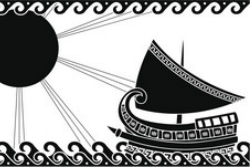A window on Aegean trade
Certain prestige archaeological artefacts, desirable among ancient societies, are especially important for revealing historic networks of trade relationships. Such items also enable reconstruction of intangible cultural elements such as customs or religion. The EU-funded VALUABLES (Patterns of trade and consumption of valuable objects in the northern Aegean area in the 2nd millennium BC) project investigated such objects. The study focused on relics of the Middle and Late Bronze Age, or about 4 000 years ago, from the north Aegean region. That time and place is generally considered a cultural backwater compared to eastern Mediterranean civilisations. The investigation considered jewellery, seals, weapons and other items, partly for their own sake. The objects also helped researchers reconstruct manufacturing technologies, while showing the relics' function and value within ancient societies. Results indicated a strongly differentiated trajectory of trade and consumption. The period 1800-1600 BCE witnessed a distinct change from earlier periods, probably due to Minoan influence on the islands of Samothrace and Lemnos. Minoan objects found at Troy may have arrived from the islands. Meanwhile, Macedonia and Thrace were not affected by Minoan contact. Yet, as of the Late Bronze Age, from 1400 BCE, the situation had changed. The period represents a zenith of demand for trade in luxury goods. The study area showed differences between east and west. Macedonian artefacts reflect local and Balkan elements; grave objects at that location were mixed with objects from further south on the Greek peninsula. Yet, in the eastern part of the study site, Balkan and/or European elements are almost non-existent among personal ornaments. Imports included Mycenaean objects plus those from much further afield. Thus, sites such as Troy must have been embedded in a trade network along the Anatolian coast, connected to more exotic eastern sources. However, Macedonia was probably linked to maritime and land routes involving just the Balkans and Greece. The VALUABLES project was the first comprehensive study of valuable artefacts from the north Aegean. The research filled certain knowledge gaps, including the role of Troy in context of its time and place.
Keywords
Aegean trade, trade relationships, Late Bronze Age, archaeological artefacts, valuable objects

